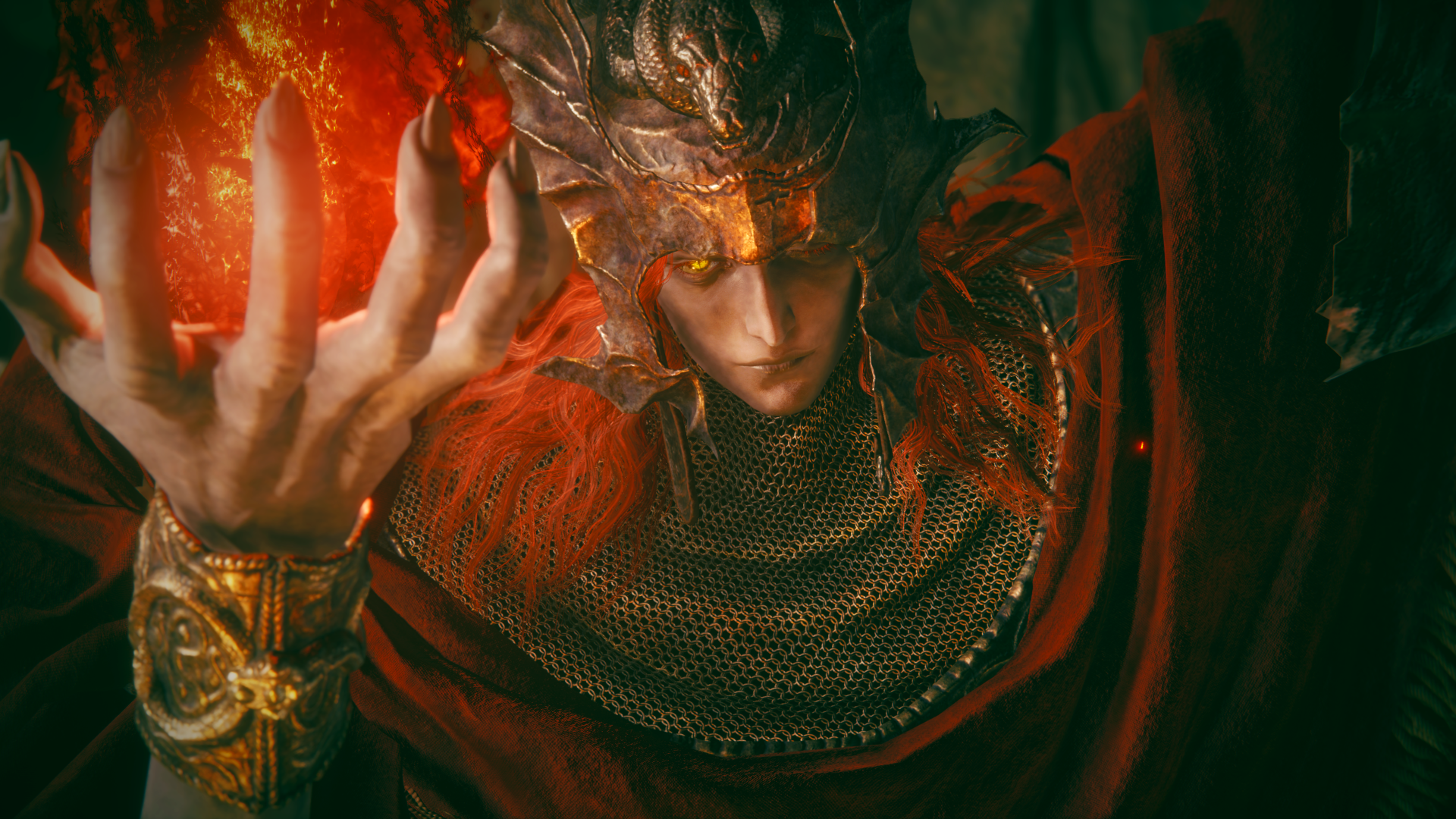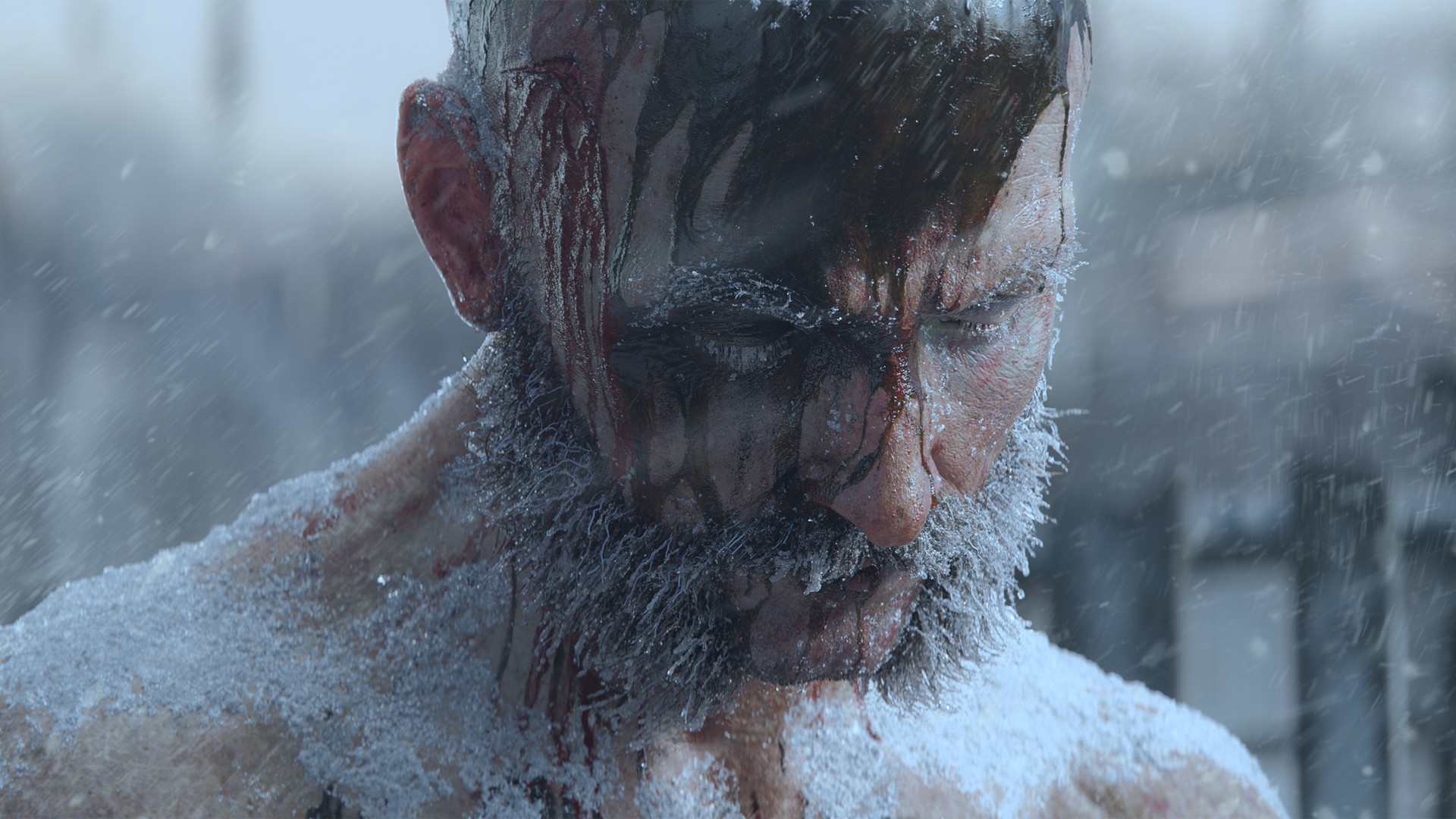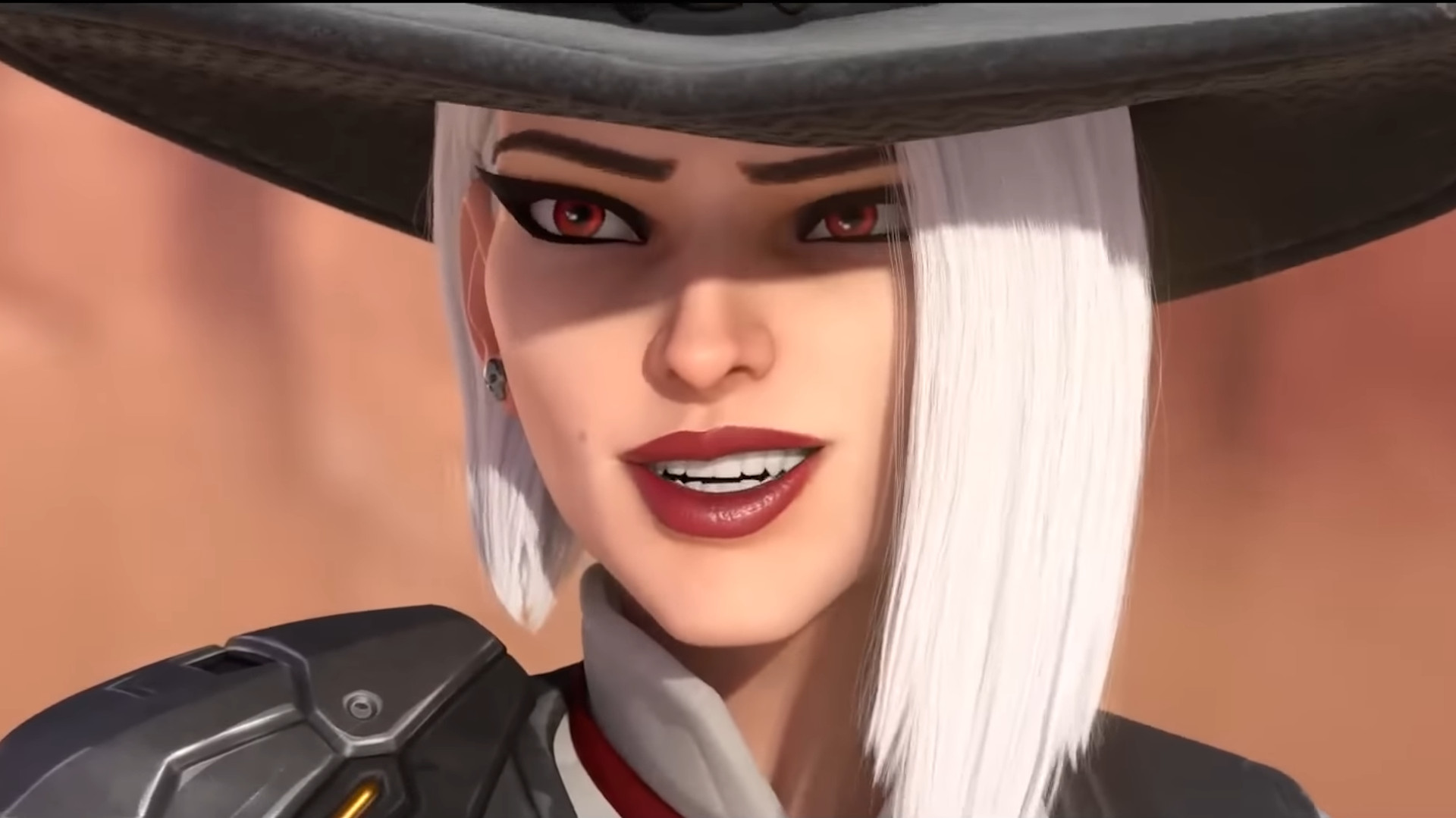
FromSoft proves itself unparalleled once again in creating a world full of captivating battles, gorgeous setpieces, and impeccable storytelling.
Elden Ring: Shadow of the Erdtree is a staggering expansion, not only for its massive size—it’s about as big as half of the original map—but for all the ways it challenges the assumptions I had about the nature of its world, coming from the main campaign, and the limits of an open world narrative.
What is it? A massive open world action RPG expansion set in a dark fantasy world
Release date June 20, 2024
Expect to pay $40/£40
Developer FromSoftware
Publisher Bandai Namco
Reviewed on RTX 4090, Intel Core i9 12900K, 16GB RAM
Multiplayer Yes
Steam Deck Verified (base game)
Link Steam
SotE rivals Dark Souls with a corkscrew world design layered with wondrous and horrific secrets to discover. FromSoftware has perfected its command over creating a dark fantasy world layered with history and details that cement Elden Ring as one of the most creative and satisfying action RPGs ever made. Old enemies return in new contexts, new weapon and spell types stretch your approach to combat with acrobatic animations and potent synergies with existing items, and new characters come to blur the morality of major figures we’ve spent hundreds of hours learning about. Shadow of the Erdtree’s storytelling is so masterfully embedded into the fabric of everything you see and do that it’s practically elemental.
The gnarled tree at the center of the Land of Shadow, a shrouded counterpart to the golden plains of the Lands Between, anchors you to the anguish of SotE, inescapable no matter where you go. Razed by the Golden Order long before your Tarnished shows up, the Land of Shadow is an ancient, festering wound that won’t heal. In the first major dungeon, a blind old woman—who mirrors the Finger Reader crone that proclaims you Elden Lord in the original game—calls you a villain and asks if the years of bloodshed weren’t enough. Even if you don’t consider yourself an oppressor, to her, being a graced-touched Tarnished makes you complicit in the atrocities committed by Messmer, and by extension, the Golden Order.
She returns later to awaken SotE’s first major boss, a group of dancers wearing a ceremonial lion costume. The fight against this swirling mass of hair and horns is more overwhelming than some of the Elden Ring’s late-game battles. The room is showered in lightning and icicles, setting a precedent for every major fight to come.
A dual-wielding sorcerer who attacks with a fury no boss in the base game could match. An old dragon rises into the sky and blankets the arena in apocalyptic storms. Even against minor bosses in SotE’s dungeons, the spectacle is as dazzling as it is terrifying. Knights will sprout wings and lift off into the air, completely changing the dynamic of a fight, and when the largest bosses prepare for a room-clearing attack, the music will drop out and return a moment later with an entirely different mood. FromSoft repeatedly bends the typical crescendo of a boss fight to communicate something new about your opponent, whether that’s a monstrous transformation or the fleeting energy of an opponent who has already lost.
Bosses aren’t just a test of your skill and ability to react in SotE: They’re short narrative arcs that can embolden the thrill of victory or completely hollow it out.
FromSoft revitalizes its boss encounters with creative counters to habits formed from playing Elden Ring, nudging you to either fully invest in your chosen playstyle or mold your build around these dramatic new fights—fans of the Meteorite spell, for example, will need to accommodate for bosses who can’t be knocked out of dangerous attacks. I found myself too sluggish sticking with the two-handed mace I walked into the DLC with, but saying goodbye to it led to me falling in love with some of the new weapons, like the throwing daggers that magically rematerialize in my hand. In a flexible spellcaster build, they complemented faster (but weaker) spells.
You’ll need to adapt because combat encounters constantly deny old tricks.
You’ll need to adapt because combat encounters constantly deny old tricks, like a catacomb dungeon that brings back Bloodborne’s dreaded frenzy debuff to force you to run straight into the unknown or risk instant death. FromSoft has also invented a new, somehow worse type of bird that will pester you everywhere you go like horse-sized mosquitos on a camping trip. Even the hand spiders return after nobody asked them to—get ready for the dread of running through a field full of them lying in wait. Almost everything you hated having to deal with in Elden Ring is back in a way that feels like a middle finger from FromSoft, followed by a confident handshake signaling that you willingly signed up for this and will actually enjoy every minute of it.
(Image credit: Tyler C. / FromSoftware)
Weapons like the new great katanas—which also feel like a middle finger to anyone who was tired of seeing the Rivers of Blood—push Elden Ring’s rhythmic combat into new directions. Upgrade materials are abundant enough that it’s not a chore to give them, and the many other new weapons, a shot. I would’ve never thought FromSoft would let me leap into the air and spin kick a giant scorpion to death at a speed that could work in faster action games like Devil May Cry, but it absolutely does with the new martial arts weapons.
These weapons, and some of the newer movement-based spells, show that FromSoft has the chops to innovate on a combat style it made synonymous with the soulslike and shift it into a gear that competes with the best action games out there. The backhand blades were my favorite: they supercharge the age-old trick of circling around gigantic enemies with a skill that lets you dash behind them at the same speed as a regular dodge roll.
But for every old trick in SotE there’s a devious new counter: Some enemies, like the new Fire Knights, are too smart for this and will fling out delayed magical attacks in a circle around them. They’d catch me mid-swing every single time. Other enemies, like the towering furnace golems, don’t take meaningful damage until you find a way to expose their weak spot, which adds a satisfying wrinkle to mounted combat. FromSoft remains a step ahead no matter how experienced you are with its games, and yet this back-and-forth is what keeps me coming back every time.
Hiding in plain sight
(Image credit: Tyler C. / FromSoftware)
SotE won’t let you look away from the point it’s trying to make about the hypocrisy of the Lands Between.
The heightened difficulty allows SotE’s new leveling system, which requires finding two new upgrade items scattered in the Land of Shadow, to lure you through the maze-like design of the new map. SotE is as dense and vertically aligned as Lordran in Dark Souls, with forking paths to distract you from your initial destination.
From the very start you can see poison swamps and castles begging to be explored, but with no clear way to get to them. Deep ravines and lakes block your way, naturally funneling you into the caves or one of DLC’s new dungeons. Some paths are dead ends, but a surprising number open up into vast new sections of the map you’ve never seen before, like an area blanketed in bright blue flowers that was tucked just underneath a ridge in the game’s opening region.
Most of these parts of the map can be accessed from multiple directions if you know where to look, intensifying the DLC’s dreamlike quality: it feels like there are entire realms to explore lurking right outside your field of view. Turn your head just so, and suddenly there they are.
Every time I return to the beginning of the game, I’m amazed at how considered the construction of the world is, carefully constructed to preserve its deepest mysteries while still letting you get a glimpse of what’s to come. SotE’s smaller map doesn’t limit the expansiveness you’d expect out of Elden Ring, it just reorients it in another direction, where ladders send you into hidden ruins and elevators take you into forests grown on stone pillars reaching into the sky.
(Image credit: Bandai Namco)
The payoff for your occasionally grueling path through SotE are dozens of secrets and gorgeous views to stumble into. I once got lost trying to avoid those hand spiders and fled to the nearest site of grace that happened to be overlooking a field of massive stone structures—which are instantly recognizable to anyone who played Elden Ring—sprouting out of the ground. It was like taking the elevator down into Siofra River for the first time again, but heightened with the gut-punch of those familiar shapes. SotE does this again and again, teasing you with a captivating view of the corpse of a dragon lying in a pool of blood-red flowers or the fading silhouette of a tower piercing through a golden sky. If Elden Ring was like exploring a pristine painting, SotE is like exploring that same painting after it’s been dunked in alcohol; the colors are smeared and fleeting, but its beauty endures.
Shadow of the Erdtree refuses to let you look away from the point it’s trying to make about the hypocrisy of the Lands Between. Even when you’re galloping through its ruins and an arrow sends you flying off your horse like you’re in an episode of Jackass, the hostility cuts deeper when you know no hero could save this place, its fractured reflection. FromSoft is careful not to badger you about morality and lets the slapstick humor of death provide levity, but SotE cleverly contrasts your ascent to Elden Lord with a grotesque tour of the bodies buried underneath the throne.
(Image credit: Tyler C. / FromSoftware)
SotE’s new characters also call back to the original campaign, widening your spective of figures now lost to history, and manage to be just as idiosyncratic as you’d expect from a FromSoft game. Freyja is a woman who fought alongside Radahn and daydreams about gladiatorial combat. Her love of battle and admiration for you is surprisingly charming in a DLC that is otherwise extremely dour. One initially heroic character—whose identity I won’t spoil—asks you to lend a hand in a series of betrayals that make Lautrec in Dark Souls look like a level-headed guy. After the first murder, they have an epiphany about their actions: “I’ve come to a realization … There’s ample evidence … I’m quite mistrustful of others.” You don’t say!
Elden Ring already contained FromSoft’s most ambitious challenges and themes, and SotE is obviously essential for fans who want more of it. But the ways the DLC deliberately mimics the original game elevate it from a simple epilogue to a clear thesis on what Elden Ring has always been about, no matter how much dialogue you skipped or item descriptions you left unread. It wields these familiar things to satisfy all the sickos they’ve created since Demon’s Souls. And then, in a few late-game moments, pushes it all aside to look you in the eyes and make it clear what it’s getting at.
It’s a stunning achievement that reminds me why I fell in love with FromSoft’s games in the first place and why this studio remains unparalleled in creating eclectic, unforgettable worlds time and time again.







